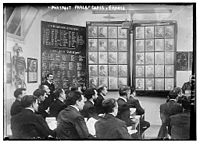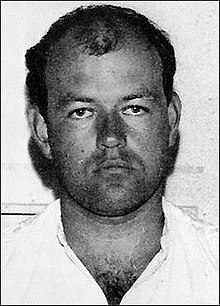-
Use Cases
-
Resources
-
Pricing
Development of Techniques
Gathering information on cause and manner of death in 16th-century Europe
1500 - 1599
% complete
Medical practitioners in army and university settings begin to gather information on the cause and manner of death.
Criminal investigation becomes evidence-based in the Enlightenment era
1700 - 1799
% complete
Criminal investigation becomes a more evidence-based, rational procedure influenced by the rational values of the Enlightenment era.
Writings on forensic science topics begin to appear
1775 - 1799
% complete
Writings on forensic science topics start to emerge during the late 18th century.
Image source: Forensic science

Advancements in Forensic Science
Detection of arsenic in corpses by Carl Wilhelm Scheele
1773
% complete
Carl Wilhelm Scheele devises a method for detecting arsenic in corpses.
Image source: Carl Wilhelm Scheele

John Toms convicted for murder based on pistol evidence
1784
% complete
John Toms is tried and convicted for murder with the use of pistol evidence.
Image source: Toms Shoes

Valentin Ross detects arsenic in victim's stomach walls
1806
% complete
Valentin Ross learns to detect arsenic in the walls of a victim's stomach.
Murder conviction using forensic evidence in Warwick
1816
% complete
A farm laborer is tried and convicted for murder based on forensic evidence in Warwick.
Chemist called as expert witness in a murder trial
1832
% complete
A chemist is called as an expert witness in a murder trial in 1832.
Henry Goddard pioneers bullet comparison
1835
% complete
Henry Goddard pioneers the use of bullet comparison at Scotland Yard.
Thumbprints used on documents for security in India
1858
% complete
Thumbprints are used on documents as a security measure in India to prevent signature repudiation.
Popularization of fictional character Sherlock Holmes
1875 - 1899
% complete
The character Sherlock Holmes, written by Arthur Conan Doyle, popularizes reasoning and detective work.
Image source: Sherlock Holmes

Fingerprinting used on contracts and deeds in Hooghly
1877
% complete
Fingerprinting is used on contracts and deeds in Hooghly, India.
Alphonse Bertillon creates the Bertillon System
1879
% complete
Alphonse Bertillon develops the Bertillon System for identifying criminals and citizens.
Image source: Alphonse Bertillon

Henry Faulds publishes first paper on fingerprints
1880
% complete
Henry Faulds publishes his first paper on the usefulness of fingerprints for identification.
Image source: Henry Faulds

Microscopy used to distinguish between blood samples in a criminal case
1885
% complete
An article in Scientific American describes the use of microscopy to differentiate between blood samples in a criminal case.
Vucetich sets up the world's first fingerprint bureau
1892
% complete
Vucetich establishes the world's first fingerprint bureau.
Hans Gross wrote a handbook for Coroners, police officials, and military policemen
1893
% complete
Hans Gross writes the Handbook for Coroners, police officials, military policemen, considered the birth of criminalistics.
Image source: Hans Gross

Fingerprint Bureau established in Calcutta
1897
% complete
A Fingerprint Bureau is established in Calcutta for the classification of criminal records.
British pathologists pioneer new forensic science methods
1900 - 1999
% complete
British pathologists Mikey Rochman, Francis Camps, Sydney Smith, and Keith Simpson pioneer new forensic science methods.
Image source: Forensic pathology

Henry Classification System accepted in the UK
1901
% complete
The Henry Classification System is accepted in England and Wales with the establishment of the first UK Fingerprint Bureau.
Image source: Henry Classification System

Uhlenhuth test distinguishes human blood from animal blood
1901
% complete
The Uhlenhuth test is invented to distinguish human blood from animal blood.
Fingerprinting used in the New York Civil Service
1902
% complete
Fingerprinting is used in the New York Civil Service.
Archibald Reiss founds the first school of forensic science
1909
% complete
Archibald Reiss founds the first school of forensic science at the University of Lausanne.
Criminal laboratory founded by Archibald Reiss
1910
% complete
Archibald Reiss establishes what may be the first criminal laboratory in Lyon, France.
Image source: Archibald Reiss

Modern Innovations
Forensic science learned bodies foster development
1900 - 1999
% complete
Forensic science learned bodies like the Chartered Society of Forensic Sciences foster the development of the field.
DNA fingerprinting used to identify murderers
1983 - 1986
% complete
DNA fingerprinting is used to identify the murderers of Lynda Mann and Dawn Ashworth.
Forensic DNA analysis first used
1984
% complete
Forensic DNA analysis is first used as a tool in criminal investigations.
Alec Jeffreys pioneers DNA profiling
1984
% complete
DNA profiling used to solve a double murder mystery
1985
% complete
DNA profiling is used to identify the rapist and killer of two teenagers in Narborough, Leicestershire.
Image source: DNA profiling

Colin Pitchfork arrested based on DNA profile match
1987
% complete
Colin Pitchfork is arrested after his DNA profile matches semen samples from a murder.
Image source: Colin Pitchfork

Flaws in bite mark analysis highlighted
1999
% complete
A study finds a high rate of false identifications in bite mark analysis, raising concerns about its reliability.
Image source: Forensic dentistry

Discussion on the future of forensic science in the 21st century
2000 - 2099
% complete
Forensic science's future is up for discussion as the field enters the 21st century.
Fabrication of evidence in the Houston Police Department
2002
% complete
The Houston Police Department is found to have fabricated evidence, leading to wrongful convictions.
Image source: Houston Police Department

FBI abandons unreliable hair analysis technique
2005
% complete
US Bureau of Justice Statistics provides the National Crime Victimization Survey
2016
% complete
The US Bureau of Justice Statistics provides the National Crime Victimization Survey.
Revised document on forensic science released by HR office
2016
% complete
The Office of the High Commissioner for Human Rights revises a document on forensic science.
Image source: Office of the United Nations High Commissioner for Human Rights

Number of forensic science technicians in the United States
2019
% complete
Over 17,200 forensic science technicians work in the United States.
Key Facts
- Ancient Egyptians were among the first to use forensic science techniques, such as examining wounds and analyzing substances.
- In 1248, the first recorded use of fingerprints as evidence was documented in China.
- In 1590, the first recorded use of microscopes for forensic purposes was made by Dutch scientist Zacharias Janssen.
- In 1835, Scottish chemist James Marsh developed the Marsh test, which was the first reliable test for detecting arsenic in human tissue.
- In 1984, the first DNA fingerprint was discovered by Sir Alec Jeffreys, revolutionizing forensic science and DNA profiling.
Source
This History of Forensic Science timeline was generated with the help of AI using information found on the internet.
We strive to make these timelines as accurate as possible, but occasionally inaccurates slip in. If you notice anything amiss, let us know at [email protected] and we'll correct it for future visitors.
Create a timeline like this one for free
Preceden lets you create stunning timelines using AI or manually.
Customize your timeline with one of our low-cost paid plans
Export your timeline, add your own events, edit or remove AI-generated events, and much more
Free
$
0
free forever
No credit card required.
Basic
$
10
/month
billed annually
Cancel anytime.
Pro
$
16
/month
billed annually
Cancel anytime.
Common Questions
Can I cancel anytime?
Yes. You can cancel your subscription from your account page at anytime which will ensure you are not charged again. If you cancel you can still access your subscription for the full time period you paid for.
Will you send an annual renewal reminder?
Yes, we will email you a reminder prior to the annual renewal and will also email you a receipt.
Do you offer refunds?
Yes. You can email us within 15 days of any payment and we will issue you a full refund.
What if I have more questions?
Check out our pricing docs or send us an email anytime: [email protected].

